Visual Elements of Art for the Painting the Burning of the Houses of Lords and Commons
Joseph Mallord William Turner (1775-1851) is arguably one of the greatest landscape artists of all fourth dimension, and perhaps the virtually well-known British artist ever. His ability in capturing the effects of color and light gave rise to his nickname "The Painter of Low-cal," and his approach to landscape art elevated the genre to rival history painting. Turner accurately captured architectural and natural details in his early works, but every bit he aged, his work became more fluid with mere proposition of movement. Turner's paintings were considered to exist ahead of his time and were forerunners for the Impressionism motility. Below you can savour 10 of his almost famous paintings.
1. Rome, from Mount Aventine (Yr: 1835)
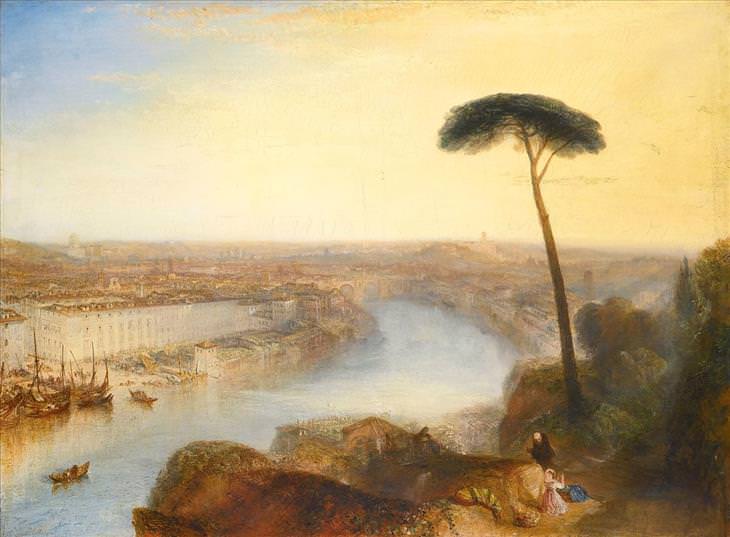
This painting depicts Rome from the Aventine Hill, one of the Seven Hills on which Aboriginal Rome was congenital. Turner has created several paintings of Rome, and when this detail i was beginning exhibited it was described by the Morn Postal service as "ane of those astonishing pictures past which Mr. Turner dazzles the imagination and confounds all criticism: it is beyond praise". In December 2014, this painting was sold at Sotheby'due south in London for £30.3m - an auction tape for a Turner painting. Furthermore, it was also the highest price paid for any pre-20th century painting by a British artist.
2. The Burning of the Houses of Lords and Eatables (Year: 1835)
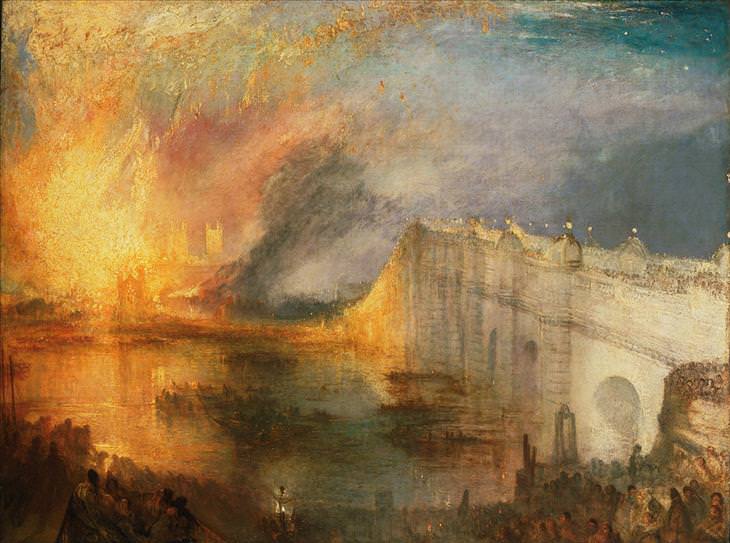
On October 16th 1834, a devastating fire bankrupt out in England's Houses of Parliament, leading to the biggest blaze in London since the Great Fire of 1666. Simply like thousands of Londoners, Turner was there to witness the burn. He took some sketches of the scene, and he after used these to create two famous paintings of the accident (both with the same title). This painting is a captivating visual record of the event and is symbolic of nature's power over man.
3. Dido Edifice Carthage (Twelvemonth: 1815)
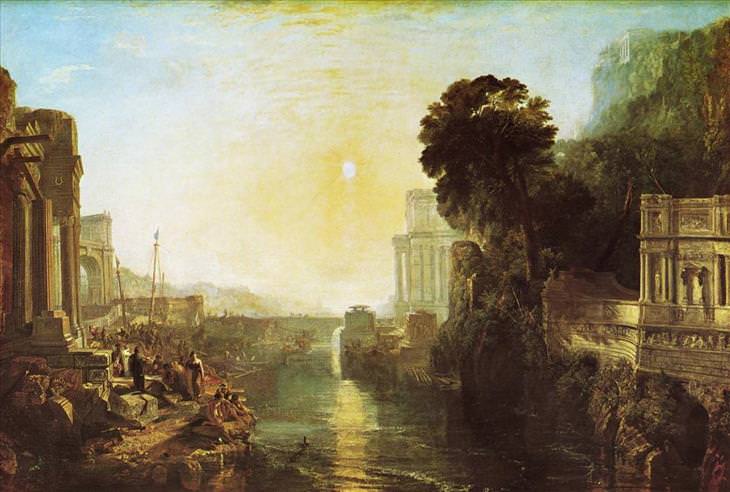
Carthage was the upper-case letter city of the ancient Carthaginian civilization while Dido, according to aboriginal historic sources, was the founder and starting time queen of Carthage. In the year 1814, Turner started to paint a serial on Carthaginian subjects and this one is its nearly famous. This painting was heavily inspired by Aeneid, an epic poem written by Virgil. It depicts the building of the North African city of Carthage with Dido being the blue and white effigy that can be seen on the left. In his early works, Turner emulated the achievements of French artist Claude Lorrain, and this painting is a direct tribute to Claude's "Seaport with the Embarkation of the Queen of Sheba (1648)."
4. Venice, from the Porch of Madonna della Salute (Year: 1835)
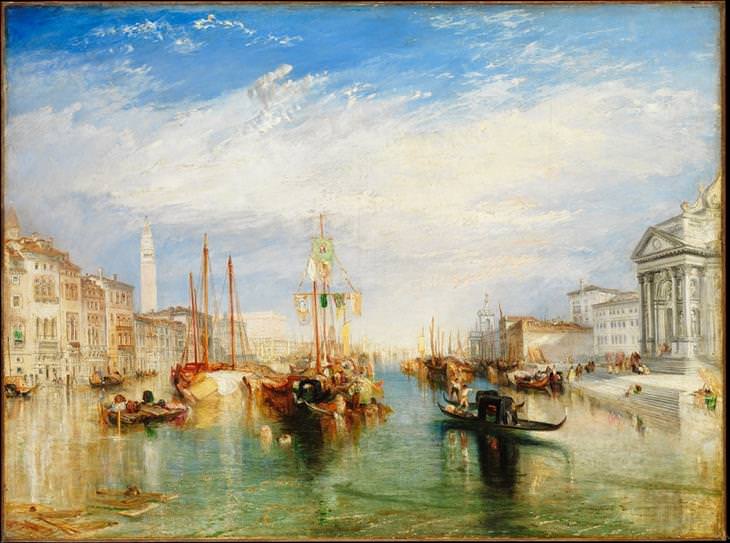
Turner traveled around a lot in social club to attempt to find inspiration for his work. He became inspired by Venice when he start visited in 1819. Turner's beloved affair with this beautiful Italian city produced a number of masterpieces, and this is his most famous ane. This painting captures the 1000 Culvert along with some buildings of Venice; and it is based on some sketches that Turner made when in this city. Turner'south command over marine painting, his talent equally a colorist, and his undeniable power to capture the effects of temper and calorie-free, can all be seen in the wonderful artwork.
v. Norham Castle, Sunrise (Year: 1845)
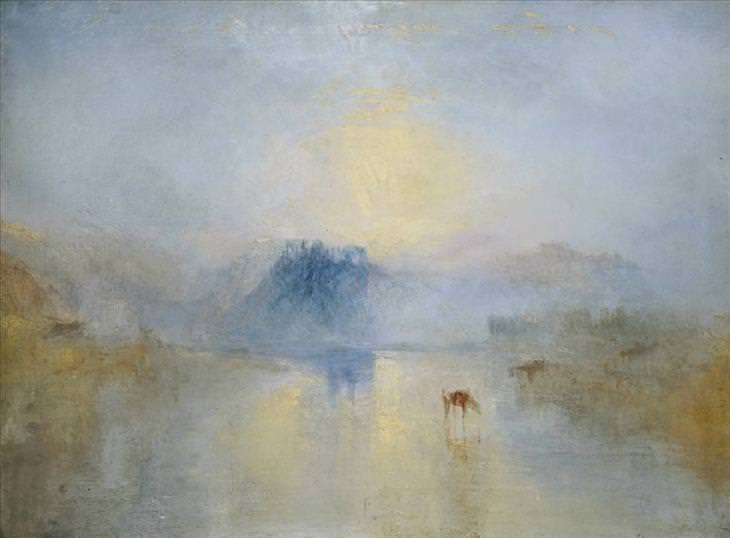
Norham Castle can be found on the River Tweed on the edge betwixt Scotland and England. Turner made his outset visit to Norham in 1797 and over the years, he painted this castle in several well-known pieces of art. This item painting was created during the latter stages of his career when his compositions became more than fluid with mere proposition of movement. This painting is now considered to be one of Turner'south greatest paintings of lite and atmosphere. While some believe that the painting is unfinished, information technology is more widely viewed equally proof of Turner'south talent.
6. The Dort (Year: 1818)
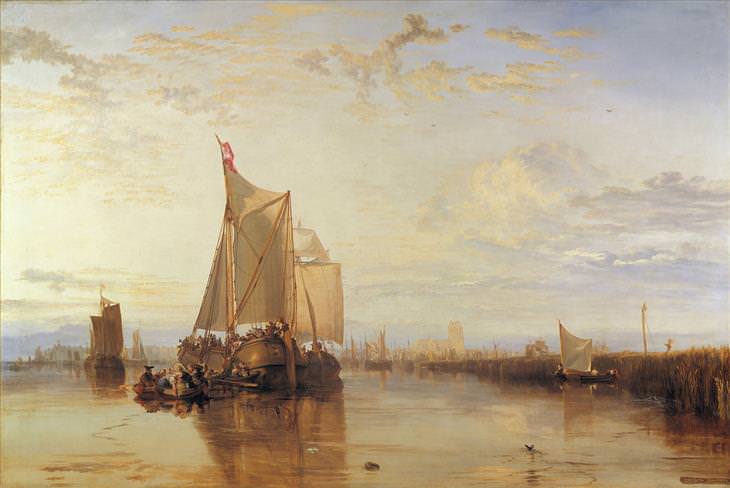
Turner first visited the netherlands in 1817. This painting shows a view of the harbor of Dordrecht, a metropolis in the West of the Netherlands. This is the finest example of the influence of Dutch marine painting on Turner'due south work and a tribute to Dutch artist Aelbert Cuyp, 1 of Turner's informative influences. When it was first exhibited, it was hailed past the Morning Chronicle as "one of the most magnificent pictures ever exhibited," and Turner's contemporary, Romantic painter John Constable, called it the "most complete work of a genius I ever saw."
7. Hannibal Cross the Alps (Twelvemonth: 1812)

Hannibal is considered to be one of the greatest armed services commanders to take ever existed. He led the Carthaginian army over the Alps and into Italy then that he could have the war direct to the Roman Republic. This crossing, which occurred in 218 BC, is i of the most historic armed services achievements in ancient warfare. As much equally this painting captures this celebrated outcome, it also brings to the fore the destructive power of nature, a mutual theme in many of Turner's latter works.
8. The Slave Transport (Yr: 1840)
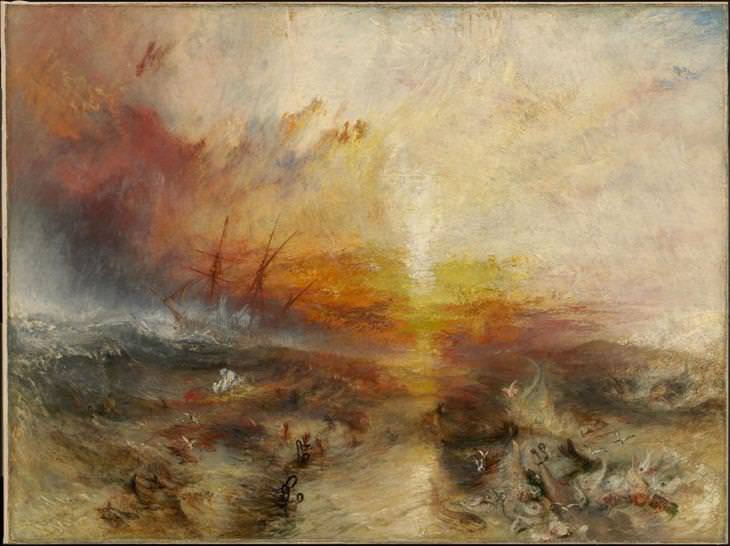
During the 1781 Zong massacre, 133 African slaves were thrown overboard by the crew of the slave send Zong. This was done to ensure the survival of the ship's remaining inhabitants besides as to greenbacks in on the insurance on the slaves. This effect is the inspiration behind this masterpiece, which was first exhibited on the same day as a meeting of the British Anti-Slavery Society. This painting shows a ship struggling in stormy seas while a number of night-skinned bodies, with their hands and feet chained, are floating in the water. Once again, turner brilliantly uses color to create a dramatic effect for the viewer.
nine. Rain, Steam and Speed (Year: 1844)
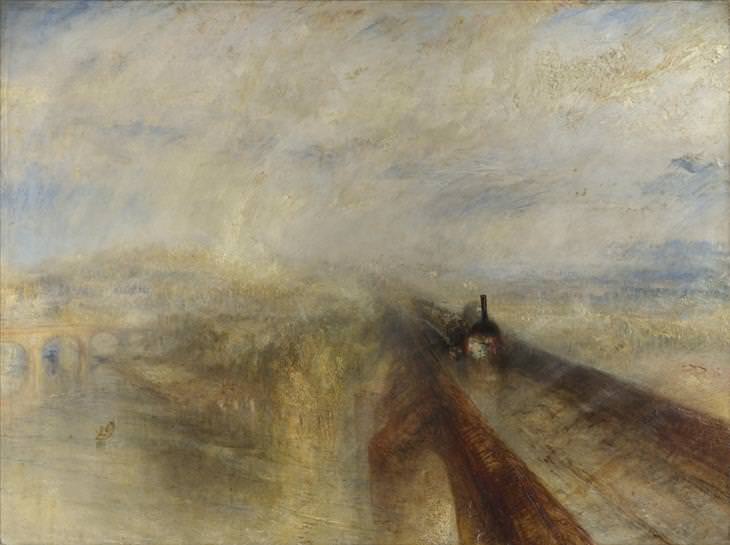
In this well-known artwork, Turner masterfully combines the industrial revolution with elements of nature. The painting shows a train budgeted the viewer at high speed. The lashing rain blends into the steam from the train, leaving the powerful black engine of the locomotive as the but visibly sharp object on the canvas. The location in this painting is the Maidenhead Railway Bridge which crosses the River Thames. This painting is considered as a forerunner to Impressionism.
x. The Fighting Temeraire (Twelvemonth: 1839)
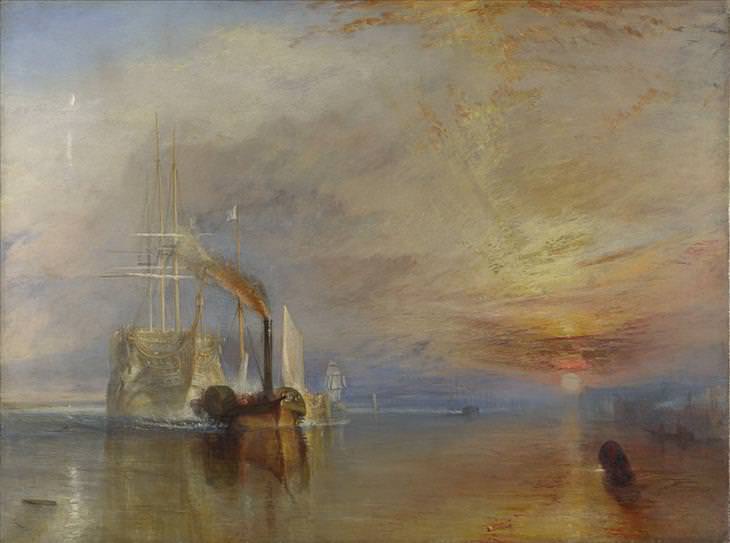
HMS Temeraire was a 98-gun 2d-rate Majestic Navy warship which is well-known for its heroic performance during the Battle of Trafalgar in 1805. This painting depicts the famous warship, years after the boxing, being pulled along by a tugboat, to be cleaved into scraps. Turner uses symbolism, such every bit the setting lord's day, to suggest the demise of the subject and it'due south mortality despite its heroic past. This has go his most famous painting, and Turner referred to it as his "darling."
mcbridetrailtandes.blogspot.com
Source: https://www.ba-bamail.com/content.aspx?emailid=25425
0 Response to "Visual Elements of Art for the Painting the Burning of the Houses of Lords and Commons"
Post a Comment